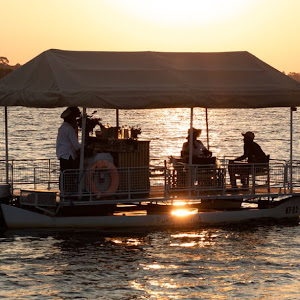With Zimbabwe’s oldest town and the cradle of national identity, is entering a new era—one marked not only by heritage, but by transformation, opportunity, and investor readiness. Founded in 1890 and home to the UNESCO-recognized Great Zimbabwe Monuments, Masvingo is more than just a symbol of the past. With a population exceeding 1.5 million and a land area of over 56,000 km².
The Provincial capital sits strategically between Zimbabwe’s four major cities—Harare, Bulawayo, Mutare, and the Beitbridge border post with South Africa—making it a critical logistical and commercial hub in the country’s developmental framework.
The province is endowed with immense natural resources—rich soils, vast mineral deposits, diverse wildlife, and abundant water bodies such as Lake Mutirikwi, Lake Tugwi-Mukosi, Manyuchi Dam, and the planned Runde-Tende Dam. These bodies not only support agriculture and tourism but are central to the province’s clean energy future. Already, a mini-hydro power station at Lake Mutirikwi is contributing electricity to the national grid, and more opportunities exist for hydro, solar, wind, and biogas investments to power both rural development and industrial growth. It boasts quality tourism accommodation around its major destinations including Lake Mutirikwi, Great Zimbabwe Monuments, Gonarezhou National Park in Chiredzi. The province is well-serviced with lodges, resorts, and private conservancies. However, the true opportunity lies in expanding complementary tourism experiences. The province remains under-leveraged in terms of adventure tourism, cultural centres, event tourism, and recreational infrastructure. Investors are encouraged to develop value-adding services such as theme parks, floating restaurants, water sports, and eco-resorts, especially around Lake Tugwi-Mukosi and its unique saddle islands.
In agriculture, the province is building on its legacy of sugar production, cattle ranching, and crop farming by advancing its Green Belt Initiative, powered by water from its inland lakes and dams. With more than 30,000 hectares of irrigable land available and investment ready, Masvingo presents exceptional potential in horticulture, aquaculture, poultry, honey production, and agro-processing. Investors can unlock value through modern irrigation, export-quality packaging, and livestock value chains. The sugar industry’s by-products ethanol and molasses offer prospects for industrial manufacturing and biofuel production.
Masvingo is also home to some of Zimbabwe’s richest mineral deposits, particularly in Bikita, where the province holds world-class lithium and tantalum reserves. Other mineral assets include gold, diamonds, asbestos, and semi-precious stones like alexandrite. These deposits remain largely underexplored and underexploited. There is strong demand for investment in mineral exploration, beneficiation, processing plants, and value addition industries such as diamond cutting and polishing.
Trade and manufacturing gaining traction, supported by Masvingo’s strategic location and growing primary industries. The province hosts Zimbabwe’s largest cattle herd, and Sugar estates in the lowveld offer ready raw materials for export and product diversification. Industrial parks, factory shells, and warehouse development would catalyse production and logistics.
However, while the economic sectors are strong, certain enabling infrastructures still need urgent attention. Chief among them is the refurbishment of Masvingo Airport. This must become a matter of national priority. Improved air connectivity will unlock business tourism, enable swift investor access, and stimulate regional trade. A modernised Masvingo Airport, with increased frequency of domestic and cross-border flights, would cement the province’s role as a key player in the region’s growth corridor.
As the province gears up to host the Masvingo Investment Conference later this month, the message is clear: this must not be another ceremonial talk shop. The event must serve as a launchpad for action. Government ministers, policymakers, and institutional leaders must come prepared to work hand-in-glove with the private sector to co-create real solutions and forge tangible partnerships. There must be robust follow-up mechanisms after the conference—project pipelines, implementation roadmaps, and joint task forces.
Business-to-business (B2B) matchmaking should be institutionalised, enabling investors to connect with SMEs, project developers, local authorities, and technical partners. Investors should arrive ready with resources, intent, and project bankability. Likewise, youth, women, and SME operators must position themselves to leverage the conference as a stepping stone toward formalised participation in value chains. Banks, venture capitalists, and development finance institutions must align their funding instruments to Masvingo’s sector-specific needs.
Amid these developments, the longstanding call by academic Professor Frederick Kasese to develop a Provincial Investment Prospectus for Masvingo becomes even more critical. A professional, comprehensive prospectus will be a vital tool not just to showcase opportunities, but to standardise investment dialogue across ministries, embassies, financiers, and the diaspora. It will give Masvingo a voice and presence in global investment circles and serve as a trusted reference point for policy coherence and private sector engagement.
Masvingo is not just Zimbabwe’s historical origin it is the gateway to the country’s next economic era. It is a province of peace, heritage, ambition, and untapped potential. With the right investments, public-private coordination, and policy execution, Masvingo will not only rise it will lead.














0 Comments